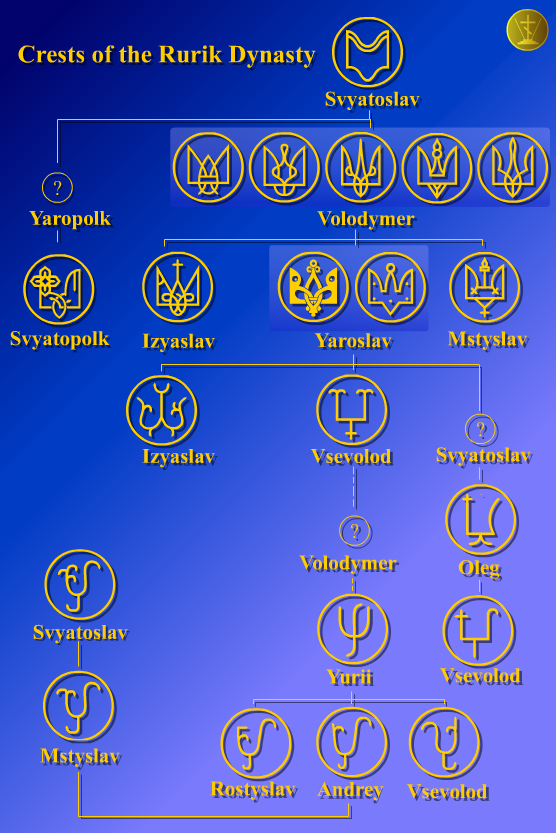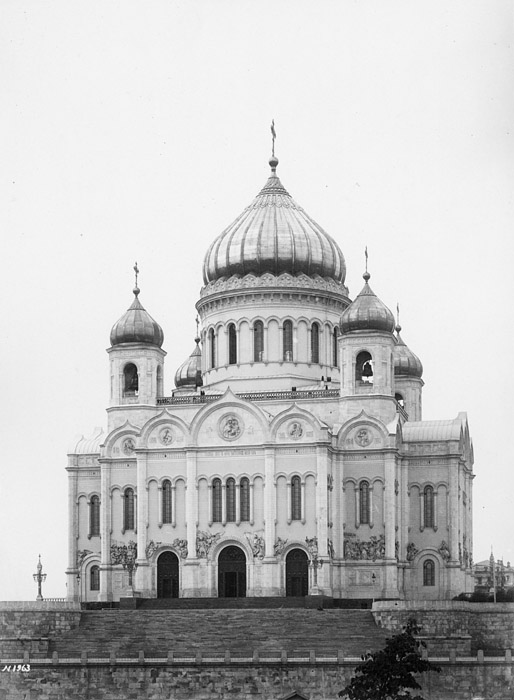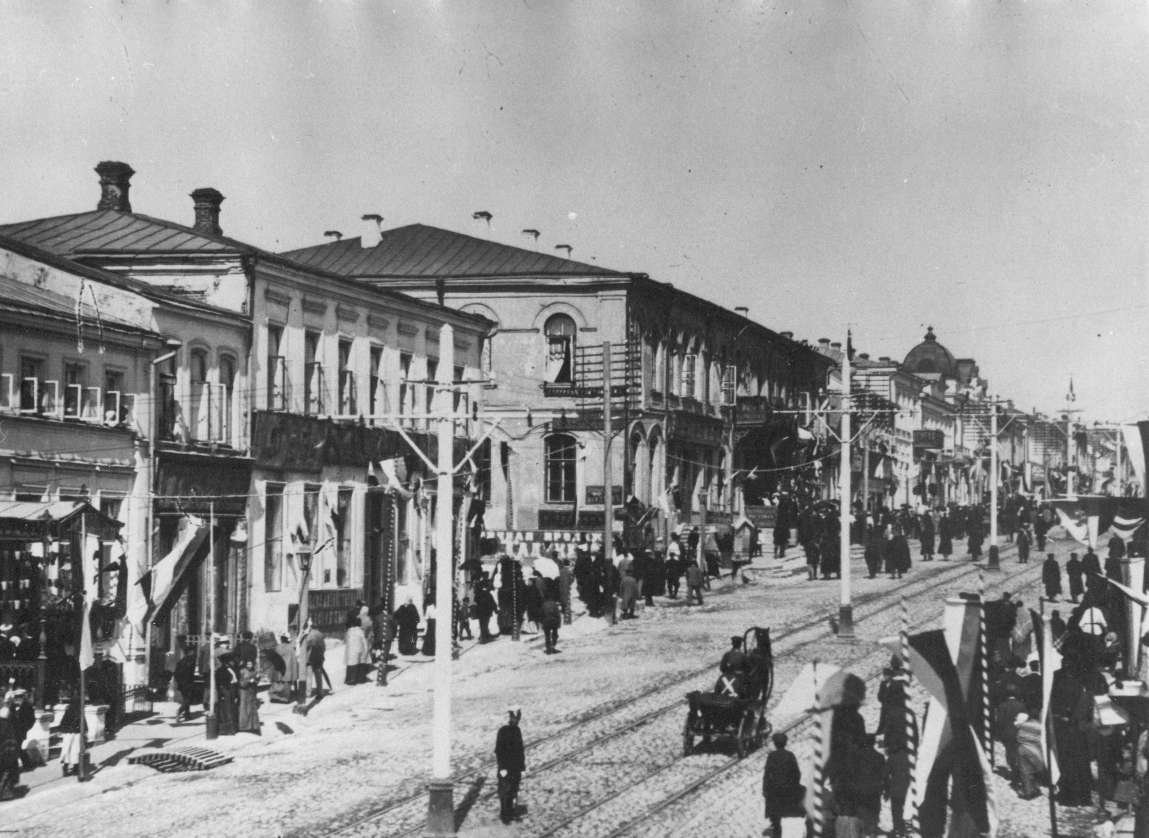|
Yelets
Yelets or Elets () is a types of inhabited localities in Russia, city in Lipetsk Oblast, Russia, situated on the Bystraya Sosna River, which is a tributary of the Don River, Russia, Don. Population: History Yelets is the oldest center of the Central Black Earth Region. It was mentioned in historical documents as early as 1146 or 1147, when it was a fort belonging to the princes of Ryazan. The town's position at the very south of the Russian lands made it an easy prey for Turkic conquerors. The Mongols burned it in 1239, Uzbeg Khan ravaged it in 1316, Timur sacked it in 1395, and the Tatars devastated it in 1414. In 1483, the Principality of Yelets was absorbed by the Grand Duchy of Moscow, while the local Rurik Dynasty, Rurikid rulers (last heard of in the 19th century) entered the service of Ivan III of Russia, Ivan III. In 1591, Boris Godunov revived the largely deserted town by establishing a fortress there. In 1618, the fortress was captured "by subterfuge" by 20,000 ... [...More Info...] [...Related Items...] OR: [Wikipedia] [Google] [Baidu] |
Yelets Cathedral
Yelets or Elets () is a city in Lipetsk Oblast, Russia, situated on the Bystraya Sosna River, which is a tributary of the Don. Population: History Yelets is the oldest center of the Central Black Earth Region. It was mentioned in historical documents as early as 1146 or 1147, when it was a fort belonging to the princes of Ryazan. The town's position at the very south of the Russian lands made it an easy prey for Turkic conquerors. The Mongols burned it in 1239, Uzbeg Khan ravaged it in 1316, Timur sacked it in 1395, and the Tatars devastated it in 1414. In 1483, the Principality of Yelets was absorbed by the Grand Duchy of Moscow, while the local Rurikid rulers (last heard of in the 19th century) entered the service of Ivan III. In 1591, Boris Godunov revived the largely deserted town by establishing a fortress there. In 1618, the fortress was captured "by subterfuge" by 20,000 Cossacks under Petro Konashevych-Sahaidachny, allied with Władysław IV of Pola ... [...More Info...] [...Related Items...] OR: [Wikipedia] [Google] [Baidu] |
Yeletsky District
Yeletsky District () is an administrativeLaw #382-OZ and municipalLaw #114-OZ district (raion), one of the eighteen in Lipetsk Oblast, Russia. It is located in the western central part of the oblast. The area of the district is . Its administrative center is the city of Yelets (which is not administratively a part of the district). Population: 29,627 ( 2002 Census); Administrative and municipal status Within the framework of administrative divisions, Yeletsky District is one of the eighteen in the oblast. The city of Yelets serves as its administrative center An administrative centre is a seat of regional administration or local government, or a county town, or the place where the central administration of a commune, is located. In countries with French as the administrative language, such as Belgiu ..., despite being incorporated separately as a city under oblast jurisdiction—an administrative unit with the status equal to that of the districts. As a municipal divi ... [...More Info...] [...Related Items...] OR: [Wikipedia] [Google] [Baidu] |
Petro Konashevych-Sahaidachny
Petro Konashevych-Sahaidachny (; ; born – 20 April 1622) was a political and civic leader and member of the Ruthenian nobility, who served as Hetman of Zaporizhian Cossacks, Hetman of Zaporozhian Cossacks from 1616 to 1622. During his tenure, he transformed Zaporozhian Cossacks from irregular military troops into a Registered Cossacks, regular army and improved relations between the Cossacks, the Orthodox clergy and peasants of Ukraine, which would later contribute to the establishment of a modern Ukrainian national consciousness. A military leader of the Polish–Lithuanian Commonwealth both on land and sea, Sahaidachny is best known for the significant role his troops played in the Battle of Khotyn (1621), Battle of Khotyn against the Ottoman Empire in 1621, as well as the Polish Prince Władysław IV Vasa's attempt to usurp the Tsardom of Russia, Russian throne in 1618. Sahaidachny reportedly took part in 60 battles without losing a single one. In 2011 Sahaidachny was can ... [...More Info...] [...Related Items...] OR: [Wikipedia] [Google] [Baidu] |
Administrative Divisions Of Lipetsk Oblast
*Cities and towns under the oblast's jurisdiction: **Lipetsk (Липецк) (administrative center) ***''city territorial okrugs'': **** Levoberezhny (Левобережный) **** Oktyabrsky (Октябрьский) **** Pravoberezhny (Правобережный) **** Sovetsky (Советский) **Yelets (Елец) *Districts: ** Chaplyginsky (Чаплыгинский) ***''Towns'' under the district's jurisdiction: **** Chaplygin (Чаплыгин) ***with 22 ''selsovets'' under the district's jurisdiction. ** Dankovsky (Данковский) ***''Towns'' under the district's jurisdiction: **** Dankov (Данков) ***with 22 ''selsovets'' under the district's jurisdiction. ** Dobrinsky (Добринский) ***with 19 ''selsovets'' under the district's jurisdiction. ** Dobrovsky (Добровский) ***with 17 ''selsovets'' under the district's jurisdiction. ** Dolgorukovsky (Долгоруковский) ***with 14 ''selsovets'' under the district's jurisdiction. ** Gryazi ... [...More Info...] [...Related Items...] OR: [Wikipedia] [Google] [Baidu] |
Lipetsk Oblast
Lipetsk Oblast () is a federal subjects of Russia, federal subject of Russia (an oblast). Its administrative center is the types of inhabited localities in Russia, city of Lipetsk. As of the Russian Census (2021), 2021 Census, its population was 1,143,224. Geography Lipetsk Oblast borders with Ryazan Oblast (NE), Tambov Oblast (E), Voronezh Oblast (S), Kursk Oblast (SW), Oryol Oblast (W), and Tula Oblast (NW). History According to archaeologists and historians, the territory of the modern Lipetsk Oblast has been inhabited since ancient times. Even before the arrival of the Mongol-Tatar troops, the area had the following settlements: Yelets, Dobrinsk (presumed to be the village of Dobroye) Dubok (presumed to be the village Dubki) (Dankovsky District), Staroye Gorodische (presumably Bogorodskoye of the Dankovsky district) Vorgol (destroyed), Onuza (destroyed), Voronozh (destroyed), Lipets (destroyed) and others. During the Mongol invasion of Rus', many fortified cities were de ... [...More Info...] [...Related Items...] OR: [Wikipedia] [Google] [Baidu] |
Rurik Dynasty
The Rurik dynasty, also known as the Rurikid or Riurikid dynasty, as well as simply Rurikids or Riurikids, was a noble lineage allegedly founded by the Varangian prince Rurik, who, according to tradition, established himself at Novgorod in the year 862. The Rurikids were the ruling dynasty of Kievan Rus' and its principalities following its disintegration. The ''Romanovichi'' ruled the southwestern territories, which were unified by Roman the Great and his son Daniel, who was in 1253 crowned by Pope Innocent IV as the king of Ruthenia. Galicia–Volhynia was eventually annexed by Poland and Lithuania. The northern and northeastern territories were unified by the ''Daniilovichi'' of Moscow; by the 15th century, Ivan III threw off the control of the Golden Horde and assumed the title of sovereign of all Russia. Ivan IV was crowned as the tsar of all Russia, where the Rurik line ruled until 1598, following which they were eventually succeeded by the House of Romanov. As a ... [...More Info...] [...Related Items...] OR: [Wikipedia] [Google] [Baidu] |
Timur
Timur, also known as Tamerlane (1320s17/18 February 1405), was a Turco-Mongol conqueror who founded the Timurid Empire in and around modern-day Afghanistan, Iran, and Central Asia, becoming the first ruler of the Timurid dynasty. An undefeated commander, he is widely regarded as one of the greatest military leaders and tacticians in history, as well as one of the most brutal and deadly. Timur is also considered a great patron of art and architecture, for he interacted with intellectuals such as Ibn Khaldun, Hafez, and Hafiz-i Abru and his reign introduced the Timurid Renaissance. Born into the Turkicized Mongol confederation of the Barlas in Transoxiana (in modern-day Uzbekistan) in the 1320s, Timur gained control of the western Chagatai Khanate by 1370. From that base he led military campaigns across Western, South, and Central Asia, the Caucasus, and Southern Russia, defeating in the process the Khans of the Golden Horde, the Mamluks of Egypt and Syria, the emerg ... [...More Info...] [...Related Items...] OR: [Wikipedia] [Google] [Baidu] |
Konstantin Thon
Konstantin Andreyevich Thon or Ton (; October 26, 1794 – January 25, 1881) was a Russian architect who was one of the most notable architects during the reign Nicholas I. His major works include the Cathedral of Christ the Saviour, the Grand Kremlin Palace and the Kremlin Armoury in Moscow. Early life Konstantin, born in St. Petersburg to the family of a German jeweller, was one of three Thon brothers who all rose to become notable architects. He studied at the Imperial Academy of Arts (1803–15) under the Empire Style architect Andrey Voronikhin, best remembered for his work on the Kazan Cathedral, situated right in the middle of the Nevsky Prospekt. He studied Italian art in Rome from 1819 to 1828, and on his return home was admitted to the academy as its member (1830) and professor (1833). In 1854, he was appointed rector of the architectural division of the academy. Thon first attracted public attention with his sumptuous design for the interiors of the Academy ... [...More Info...] [...Related Items...] OR: [Wikipedia] [Google] [Baidu] |
Cossacks
The Cossacks are a predominantly East Slavic languages, East Slavic Eastern Christian people originating in the Pontic–Caspian steppe of eastern Ukraine and southern Russia. Cossacks played an important role in defending the southern borders of Ukraine and Russia, Cossack raids, countering the Crimean-Nogai slave raids in Eastern Europe, Crimean-Nogai raids, alongside economically developing steppes, steppe regions north of the Black Sea and around the Azov Sea. Historically, they were a semi-nomadic and semi-militarized people, who, while under the nominal suzerainty of various Eastern European states at the time, were allowed a great degree of self-governance in exchange for military service. Although numerous linguistic and religious groups came together to form the Cossacks, most of them coalesced and became East Slavic languages, East Slavic–speaking Eastern Orthodox Church, Orthodox Christians. The rulers of the Polish–Lithuanian Commonwealth and Russian Empire en ... [...More Info...] [...Related Items...] OR: [Wikipedia] [Google] [Baidu] |
Oryol
Oryol ( rus, Орёл, , ɐˈrʲɵl, a=ru-Орёл.ogg, links=y, ), also transliterated as Orel or Oriol, is a Classification of inhabited localities in Russia, city and the administrative center of Oryol Oblast, Russia, situated on the Oka River, approximately south-southwest of Moscow. It is part of the Central Federal District, as well as the Central Economic Region. First founded as a medieval stronghold of the Principality of Chernigov, Oryol was part of Grand Duchy of Lithuania, Lithuania in the Late Middle Ages, late medieval period, and then Russia since the early modern period. It has served as the seat of regional administration since 1778. The city is particularly known for the infamous Oryol Prison, former prison for political and war prisoners of Russian Empire, Tsarist Russia, the Soviet Union and Nazi Germany. History Early history While there are no historical records, archaeological evidence shows that a fortress settlement existed between the Oka River and ... [...More Info...] [...Related Items...] OR: [Wikipedia] [Google] [Baidu] |
Bystraya Sosna River
The Bystraya Sosna () is a river in Oryol and Lipetsk oblasts in Russia. It is a right tributary of the Don, and it is long, with a drainage basin of .«Река Сосна (Быстрая Сосна)» Russian State Water Registry The river is usually frozen over from the end of November until the end of March. The towns of and Yelets
Yelets or Elets () is a types of inhabited localities in Russia, city in Lipetsk Oblast, Russia, situated on the Bystraya Sosna River, which is a tributary of the Don River, Russia, Don. Population:
History
Yelets is the ...
[...More Info...] [...Related Items...] OR: [Wikipedia] [Google] [Baidu] |
Mongols
Mongols are an East Asian ethnic group native to Mongolia, China ( Inner Mongolia and other 11 autonomous territories), as well as the republics of Buryatia and Kalmykia in Russia. The Mongols are the principal member of the large family of Mongolic peoples. The Oirats and the Buryats are classified either as distinct ethno-linguistic groups or as subgroups of Mongols. The Mongols are bound together by a common heritage and ethnic identity, descending from the Proto-Mongols. Their indigenous dialects are collectively known as the Mongolian language. The contiguous geographical area in which the Mongols primarily live is referred to as the Mongol heartland, especially in discussions of the Mongols' history under the Mongol Empire. Definition Broadly defined, the term includes the Mongols proper (also known as the Khalkha Mongols), Buryats, Oirats, the Kalmyks and the Southern Mongols. The latter comprises the Abaga Mongols, Abaganar, Aohans, Arkhorchin, Asud, ... [...More Info...] [...Related Items...] OR: [Wikipedia] [Google] [Baidu] |






